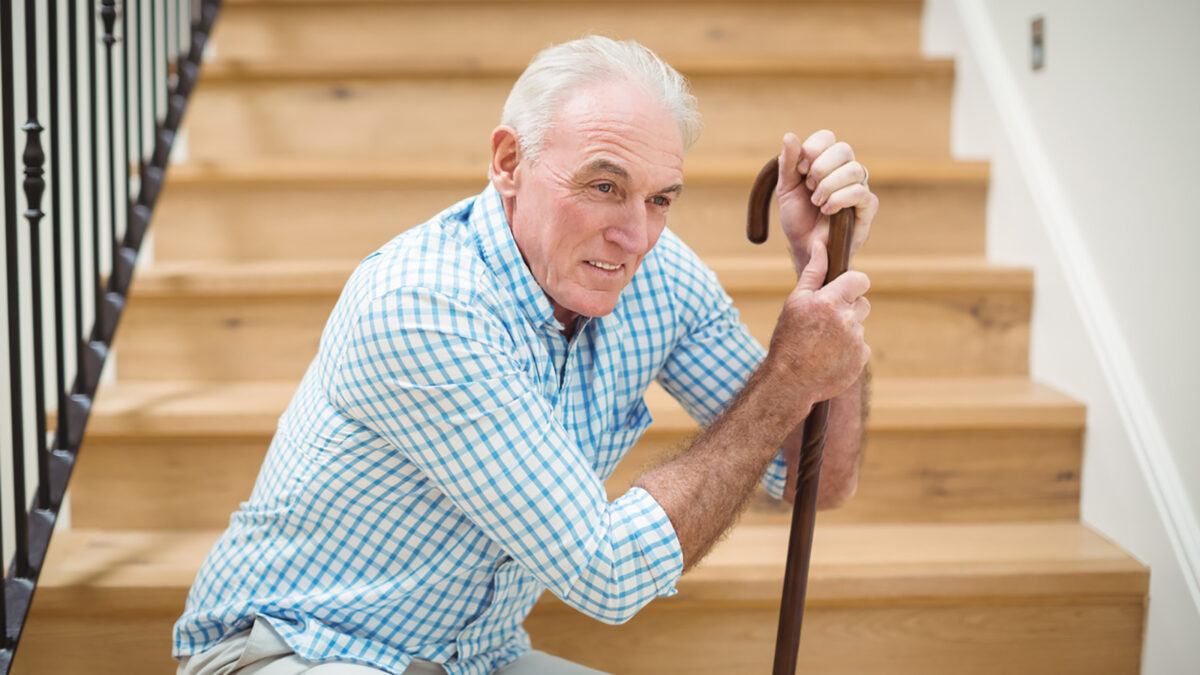Do you worry about the safety of an older loved one living at home alone? Although the house where they may have raised their family and returned to every night played such a large role in their lives, it may now have transformed into an unsafe place to age. Having safety concerns for older adults is not uncommon.
Unfortunately, most homes built in the U.S. were not constructed with this in mind. The same houses that were designed for families may not be as effective or secure when we grow older.
According to a study conducted by the U.S. Census Bureau, less than 10% of our homes are “aging-ready” – which they defined as having a step-free entryway, a first-floor bathroom and bedroom and at least one bathroom feature to support accessibility, such as a grab bar or shower seat.
10 Tips to know for home safety concerns
What signs can point to your loved one’s home no longer being safe? The following suggestions can help you know what to look for:
Carefully walk through the home and take note of any of the following features or conditions:
The home’s general condition-
Depending on the age and upkeep of the house, you’ll want to look for signs if major repairs or renovations are needed. Consider the condition of the roof, siding, windows, floors and foundation.
Exterior and interior stairs-
If steps must be navigated to enter or exit the home or climb stairs to get to a bedroom, bathroom or laundry room, the risk of falling is increased and the home may not be safe for an older loved one.
Changes in floor materials-
Look at the doorways. If there are surface changes such as switching from tile to wood or carpet between rooms, these areas can increase the risk of tripping or falling.
Room sizes-
If the home’s rooms are small, using a wheelchair or walker will be more difficult. The challenges of maneuvering safely around furniture can also increase.
Inadequate lighting-
Dim corners or shadows in a room can be dangerous to older loved ones. The inability to clearly see obstacles in their pathway or to maneuver dark stairs poses a danger.
Narrow halls, doorways and uneven floors-
Many homes were built with narrow hallways and doors that can’t accommodate any assistive walking equipment. Older homes may settle, creating uneven floors that can create a tripping or falling hazard.
Kitchen accessibility-
Assess the usability of your older loved one’s kitchen. Pay special attention to countertop heights, whether cabinet shelving can be easily reached and if the lighting is adequate for cooking safely.
Bathroom safety-
The Centers for Disease Control and Prevention has reported that over 80% of injuries in the bathroom were a result of falls. Look at your loved ones’ bathrooms with that in mind, especially if they are required to step into a tub to bathe or shower.
Light switches and door handles-
Are the light fixtures in your family member’s home easily reached? Can the entry and interior doors be opened and closed with minimal effort? Are the water faucets at the sinks and tubs easily operated?
Don’t forget the outside area and neighborhood-
A home’s safety features start before reaching the front door. Take note if there are cracked sidewalks on the property or in the neighborhood. Are there steps required to enter the home? Is the lighting supportive of clearly seeing any hazards?
How a senior living community can be the answer if you have home safety concerns for older adults
Although the costs to renovate a home are specific to the structure’s condition, design, extent of remodel and other factors, estimates to modify a 2,000 square foot house often range from $100,000 to $150,000.
If your loved ones’ house would require an extensive – and expensive – remodel, one option you may want to consider is making a senior living community their home.
Here are only a few of the benefits they’ll discover:
- An independent lifestyle
- Maintenance-free living
- Assistance with daily tasks
- Fitness centers
- Activities and social events
- Opportunities to meet and make new friends
- Dining options
- Scheduled transportation
But one of the biggest advantages of senior living communities is that they have been designed to support aging-in-place. You won’t need to worry about renovations or trying to find ways to adapt outdated design features that pose a hazard or increase the risk of falling.
Ingleside Senior Living
If you’re considering whether a senior living community could be the perfect support for your parents to live a safe and high quality of life, we hope you will visit one of our Ingleside communities. We believe it’s even easier to enjoy life with the benefits that we offer, including:
- Maintenance-free lifestyle
- Chef-prepared meals in our elegant dining rooms or casual cafés
- Fully equipped fitness centers
- Heated indoor swimming pools
- Art Studios
- Libraries
- Beautiful walking trails
For information on Ingleside’s Westminster at Lake Ridge senior living community located in Lake Ridge, Virginia, please call (703) 420-7105 with questions or to schedule a personalized tour today.
For information on Ingleside at King Farm senior living community located in Rockville, Maryland, please call (240) 414-8557 with questions or to schedule a personalized tour today.
For information on Ingleside at Rock Creek senior living community located in Washington, DC, please call (202) 846-2651with questions or to schedule a personalized tour today.

